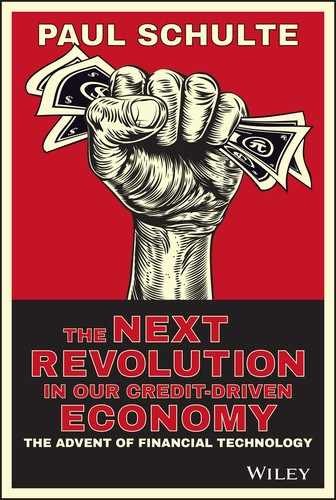Bibliography
- Ahir, H., & Loungani, P. (2014, April 14). “There will be growth in the spring: How well do economists predict turning points?” VOX.
- Aubrey, T. (2013). Profiting from Monetary Policy. St. Martin's Press.
- Biz2Credit. (n.d.). Retrieved from Biz2credit.com.
- Blinder, Alan. (2013). After the Music Stopped. Penguin Press.
- Bruce, J. (Director). (2013). Money for Nothing: Inside the Federal Reserve [Motion Picture].
- Carpenter, S., & Demiralp, S. (2010). Money, Reserves and the Transmission of Monetary Policy: Does the Money Multiplier Exist? IMF Working Paper.
- Cassidy, J. (2010, January 11). After the blowup. The New Yorker, pp. 28–33.
- Cain, S. (2012). Quiet: The Power of Introverts in a World That Can't Stop Talking. Crown Publishers.
- Clover, C. (2014, November 11). “Alibaba looks to transform ‘antiquated’ state-dominated sectors.” Financial Times.
- Das, S. (2014, October 29). “‘Coffin corner’ threat to financial stability.” Financial Times.
- Easterly, W. (2002). The Elusive Quest for Growth: Economists' Adventures and Misadventures in the Tropics. Cambridge: MIT Press.
- Feldkamp, F., & Whalen, C. (2013). Financial Stability: Fraud, Confidence and the Wealth of Nations. Hoboken: John Wiley & Sons.
- Friedman, M. (1962). Capitalism and Freedom, 40th Anniversary Edition. University of Chicago Press.
- Grunwald, M. (2013). A New New Deal. Simon & Schuster.
- Haldane, A. (2013, August 29). Andy Haldane: “Banking may be on the cusp of an industrial revolution.” Retrieved from WIRED.CO.UK: http://www.wired.co.uk/magazine/archive/2013/09/ideas-bank/a-financial-forecast-from-the-bank-of-england.
- Harding, L. (2014). The Snowden Files. New York: Random House.
- Harris, Shane. (2014) @War: The Rise of the Military-Internet Complex. Houghton Mifflin Harcourt.
- Heffernan, M. (2011). Willful Blindness: Why We Ignore the Obvious at Our Peril. Walker & Company.
- Huerta de Soto, J. (1998) Money, Bank Credit and Economic Cycles, 3rd edition. Ludwig von Mises Institute.
- Keynes, J.M. (1935). The General Theory of Employment, Interest and Money. Cambridge University Press.
- Keynes, J.M. (1920). The Economic Consequences of the Peace. Harcourt Press.
- Lanier, J. (2014). Who Owns the Future? New York: Simon & Schuster.
- LeBor, A. (2013). Tower of Basel: The Shadowy History of the Secret Bank that Runs the World. Perseus Books.
- Madrick, J. (2014, September 25). “Why the Experts Missed the Recession.” The New York Review of Books.
- Mayer-Schonberger, V., & Cukier, K. (2013). Big Data. John Murray.
- Maltzer, A. (2003). A History of the Federal Reserve. Volume 1: 1913–1951. University of Chicago Press.
- Prins, Nomi. (2014). All the Presidents' Bankers: The Hidden Alliances That Drive American Power. Nation Books.
- Raguran, R., & Zingales, L. (2004). Saving Capitalism from the Capitalists. Princeton University Press.
- Rogoff, K., & Reinhart, C. (2009). This Time Is Different. Princeton, NJ: Princeton University Press.
- Rothbard, M. (2008) The Mystery of Banking, 2nd edition. Ludwig von Mises Institute.
- Schumpeter, J. (2012) Capitalism, Socialism and Democracy, 2nd edition. Stark Publishing.
- Shambaugh, D. (2008). China's Communist Party. Berkeley: University of California Press.
- Skidelsky, R. (2010) Keynes: The Return of the Master. Penguin Books.
- Stell, Benn. (2013). The Battle of Bretton Woods. Princeton University Press.
- Stiglitz, J. (2013, January). Stable Growth in an Era of Crises: Learning from Economic Theory and History. Ekonomi-tek, 2(1), 1–39.
- Tuchman, B. (1985). The March of Folly. New York: Random House.
..................Content has been hidden....................
You can't read the all page of ebook, please click here login for view all page.
